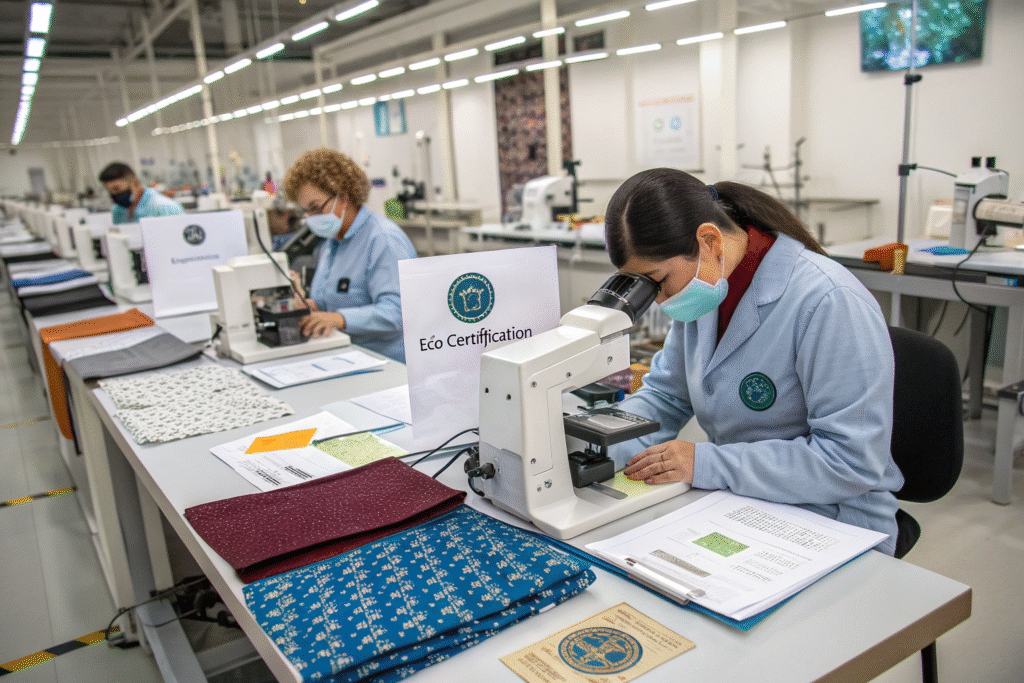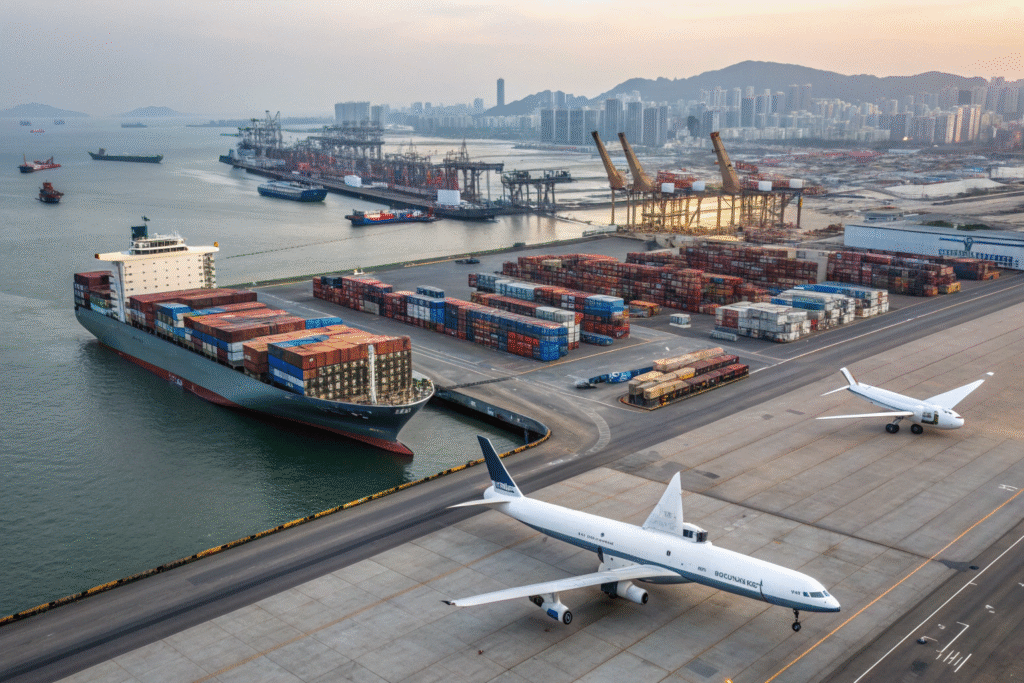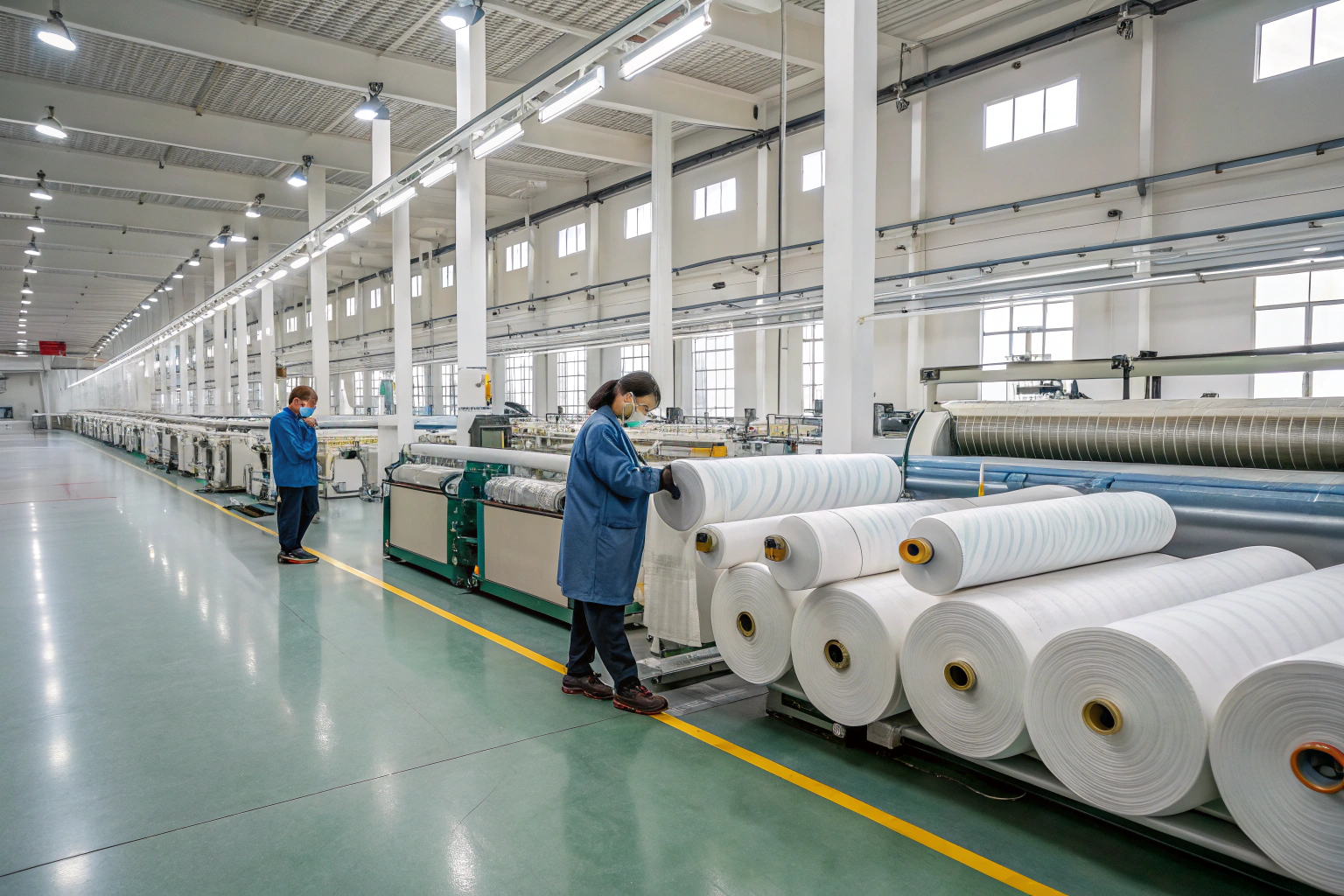In the fast-changing textile industry, finding reliable wholesale fabric suppliers in Asia can be challenging. Many buyers face issues like inconsistent quality, delayed shipping, or lack of sustainable options. These challenges create stress, raise costs, and limit growth for brands, retailers, and entrepreneurs. I have seen U.S. brands lose entire seasons because shipments were delayed or failed compliance checks.
The best wholesale fabric suppliers in Asia are found in China’s Keqiao, Zhejiang, which is the world’s largest textile hub. Companies like Fumao Fabric provide one-stop solutions, from weaving and dyeing to packaging and logistics, serving over 100 countries with certified quality and innovative fabrics. With over 30,000 ready-to-ship designs and 1,000 new R&D fabrics every year, these suppliers can meet diverse demands ranging from fast fashion to high-end functional wear.
If you want to scale your business and secure stable supply, you need to know where to find trustworthy suppliers. In this guide, I will share insights from my own 20+ years of experience in fabric production and export, helping you avoid common pitfalls and connect with the right partners. Many of our long-term clients started with small trial orders and have now grown into multi-million-dollar global businesses.
How to Identify Reliable Fabric Manufacturers?
In today’s global fabric trade, buyers are overwhelmed by thousands of options. Many claim to be professional, but only a few can truly deliver quality, speed, and compliance with international standards. This often leaves buyers confused and vulnerable to unreliable partners. I remember one American entrepreneur who paid a deposit to an unknown supplier and never received any shipment.
Reliable fabric manufacturers are those with full in-house capabilities, certifications like SGS or ITS, and proven export experience to markets such as the EU and the U.S. These suppliers can guarantee consistent quality, competitive lead times, and smooth customs clearance. At Fumao, our 98% client pass rate during quality inspections reflects this commitment.

When I work with global buyers, the first thing they look for is proof of quality control. At Fumao, we have a CNAS-certified testing center, which ensures every meter of fabric meets shrinkage, colorfastness, and safety requirements. Without these checks, buyers risk failing customs inspections or facing expensive returns. Our QR-code tracking system even allows clients to scan and view real-time test results for their batches.
What certifications should I look for?
The most important certifications include OEKO-TEX® Standard 100, Global Recycled Standard (GRS), and EU eco-certifications. These labels prove the fabric is safe, sustainable, and compliant with global requirements. If a supplier cannot provide these, you may face rejection from premium retailers. Major brands like H&M and Zara require such certifications before placing bulk orders.
How do I verify production capacity?
Always ask for factory audit reports, videos, or third-party inspection results. Platforms like SGS or Intertek can help verify whether a factory truly exists and operates at scale. This reduces the risk of dealing with trading companies disguised as manufacturers. A factory with 500 looms and monthly output of 5 million meters is more trustworthy than a small workshop with 20 machines.
What Types of Fabrics Are in High Demand?
Buyers today do not just want low prices. They want fabrics that combine style, function, and sustainability. From sportswear to eco-friendly children’s wear, the market demand is shifting rapidly. In fact, Google search trends show a 60% increase in queries for “eco-friendly fabric suppliers” in the last two years.
The most in-demand fabrics in Asia are eco-friendly textiles like recycled polyester and organic cotton, high-performance fabrics like UV-resistant and antibacterial textiles, and versatile fashion fabrics like chiffon, satin, and denim. These categories dominate inquiries from both established retailers and new online brands.

I have seen a strong shift in U.S. and European orders toward eco-friendly fabrics. In fact, our exports of recycled polyester have grown 30% year-on-year. At the same time, demand for high-performance fabrics for sportswear and outdoor gear is booming. Clients often request fabrics that meet both performance and environmental standards.
Which eco-fabrics are most popular?
The top eco-fabrics include Tencel™ Lyocell, organic cotton, and recycled polyester (rPET). These meet strict EU environmental standards and are highly attractive to conscious consumers. For example, a German children’s brand increased its sales by 40% after switching to organic cotton.
What about functional fabrics?
Functional fabrics such as moisture-wicking, flame-retardant, and antibacterial textiles are trending. Leading brands like Lululemon and Patagonia often source these materials to meet consumer demand for performance and safety. A recent market study shows that the global sportswear fabric segment is expected to grow at 8.5% CAGR through 2030.
Why Choose Suppliers from Keqiao, China?
Asia has many textile hubs, but none match Keqiao in scale and efficiency. Buyers often face delays and high costs when sourcing from scattered factories. In Keqiao, the ecosystem is complete and centralized. This makes it possible to develop a fabric sample in 48 hours and ship bulk orders in record time.
Keqiao, Zhejiang, is the world’s largest textile cluster, hosting over 80,000 manufacturers and supplying nearly 25% of global textiles. Choosing suppliers from Keqiao ensures faster delivery, better prices, and more fabric options than anywhere else in Asia. The area is also supported by advanced logistics hubs, with daily shipping to major ports like Ningbo and Shanghai.

I have witnessed firsthand how Keqiao’s infrastructure benefits global buyers. From weaving mills to dyeing and finishing factories, everything is within a few kilometers. This cuts logistics costs and ensures that even urgent orders can be fulfilled quickly. Many of our clients rely on Keqiao’s “fabric market of the world,” where over 30,000 fabric samples are displayed daily.
What makes Keqiao different from other hubs?
Unlike Dhaka or Ho Chi Minh, Keqiao integrates fabric R&D, production, and trading in one location. You can source seasonal fashion fabrics, technical textiles, and eco-certified materials all in one place. Learn more from China Textile City. This ecosystem attracts over 700,000 buyers annually, making it the most dynamic fabric trading hub.
How does Keqiao support exports?
Keqiao benefits from government-backed programs like the Silk Road Keqiao Initiative. This supports customs clearance, overseas warehouses, and multimodal logistics, making exports faster and safer compared to other Asian regions. These efforts have helped reduce export clearance times by up to 40%.
How to Avoid Common Sourcing Problems?
Many international buyers complain about hidden costs, inconsistent communication, or delayed shipments. These problems often happen when working with small, unverified suppliers. A U.S. startup once shared with me how their shipment was held for weeks due to missing compliance paperwork, costing them $50,000 in lost sales.
The best way to avoid sourcing problems is to partner with established manufacturers with financial stability, in-house QC teams, and proven logistics solutions. They offer transparency, reliable delivery, and protection against tariff or policy risks. At Fumao, we support clients by covering potential tariff shocks through diversified supply channels.

At Fumao, we integrate weaving, dyeing, printing, embroidery, coating, and packaging under one roof. We also have strong banking partnerships, which ensure smooth cash flow and secure bulk orders. This protects our clients from unexpected delays. For example, during the COVID-19 disruptions, we maintained uninterrupted deliveries to Europe by leveraging multimodal routes.
How do I avoid hidden costs?
Always request a full proforma invoice that includes Incoterms and clear breakdowns of shipping, tariffs, and packaging. Trusted suppliers provide transparent pricing and avoid last-minute surcharges. A professional supplier will even help optimize shipping methods to reduce costs.
How do I manage logistics risks?
Choose suppliers with global shipping support. At Fumao, we work with Keqiao’s multimodal hubs to ensure timely deliveries by sea, air, and rail. Partnering with companies that have overseas warehouses, like those supported under RCEP, further reduces risk. Our average on-time delivery rate has exceeded 95% for five consecutive years.
Conclusion
Finding the best wholesale fabric suppliers in Asia requires more than a Google search. You need reliable partners with proven quality control, diverse product portfolios, sustainable certifications, and export experience. From eco-friendly textiles to technical fabrics, the market is demanding suppliers who can deliver innovation, speed, and security.
If you are ready to source fabrics from a trusted partner, we at Shanghai Fumao are here to support your business. Contact our Business Director Elaine at elaine@fumaoclothing.com to discuss your next fabric order and co-create value together.










